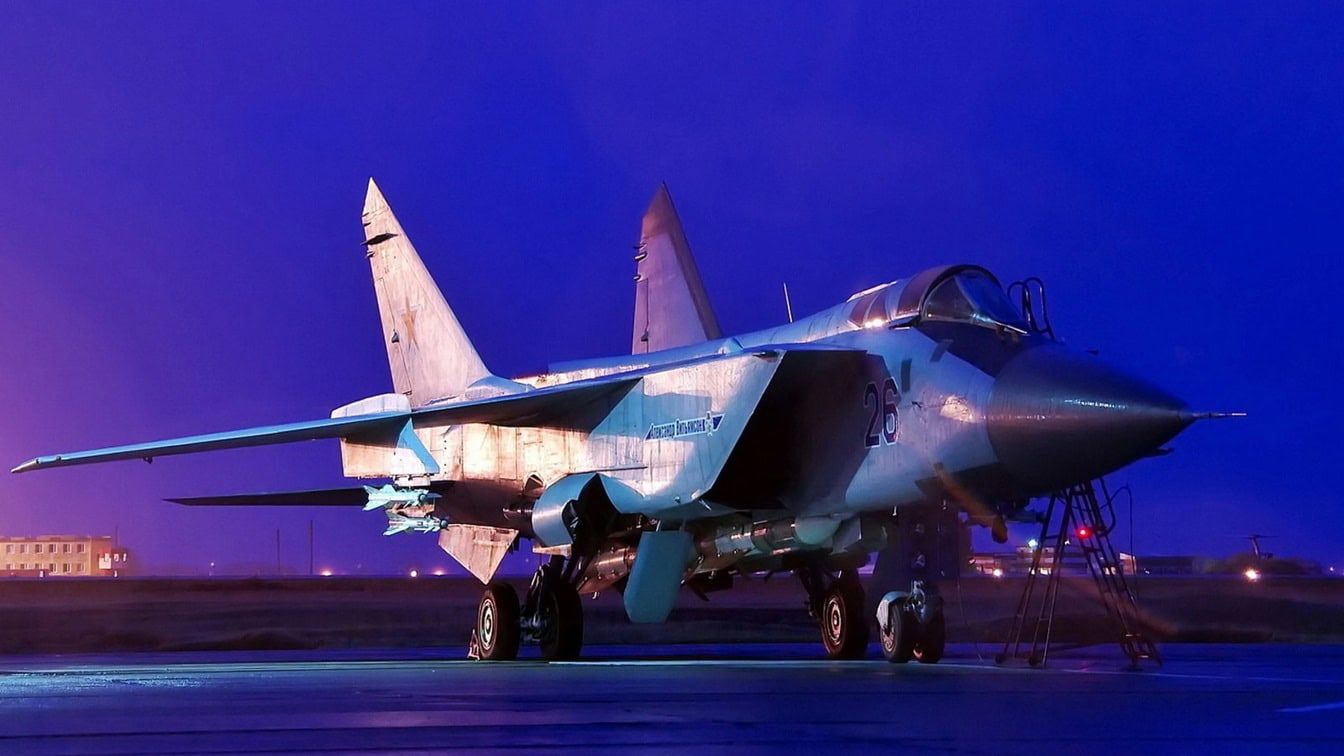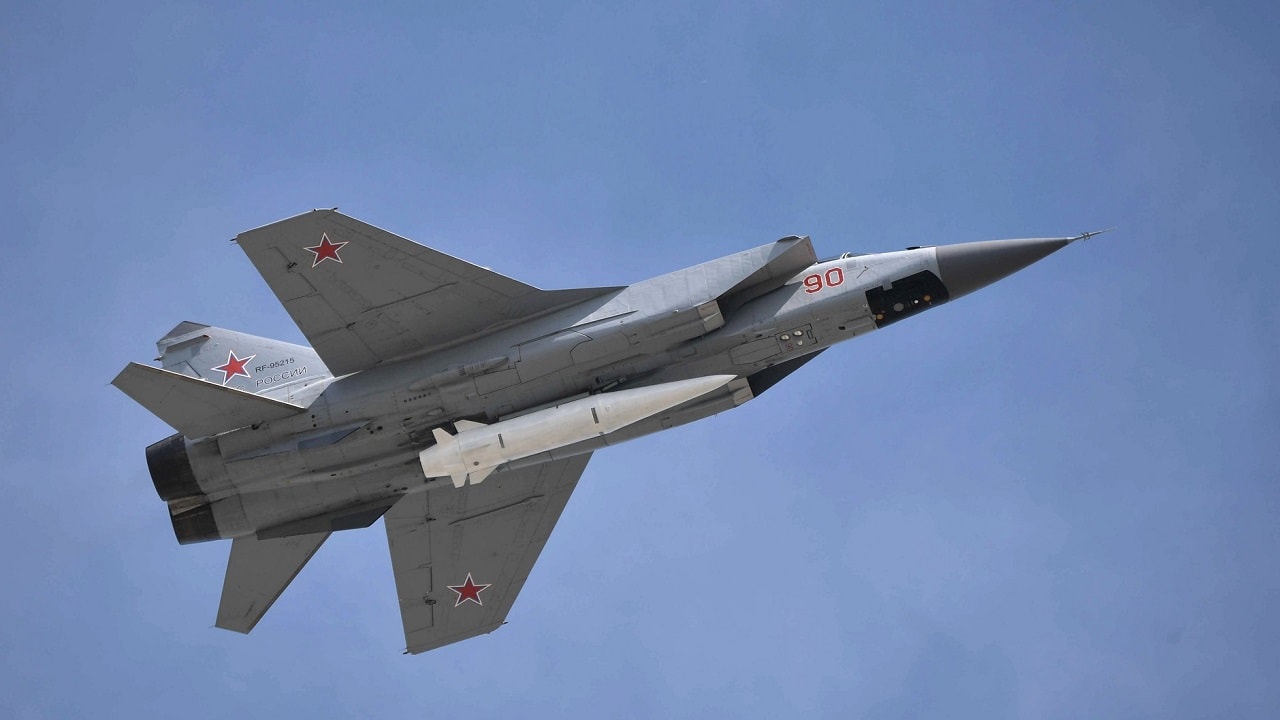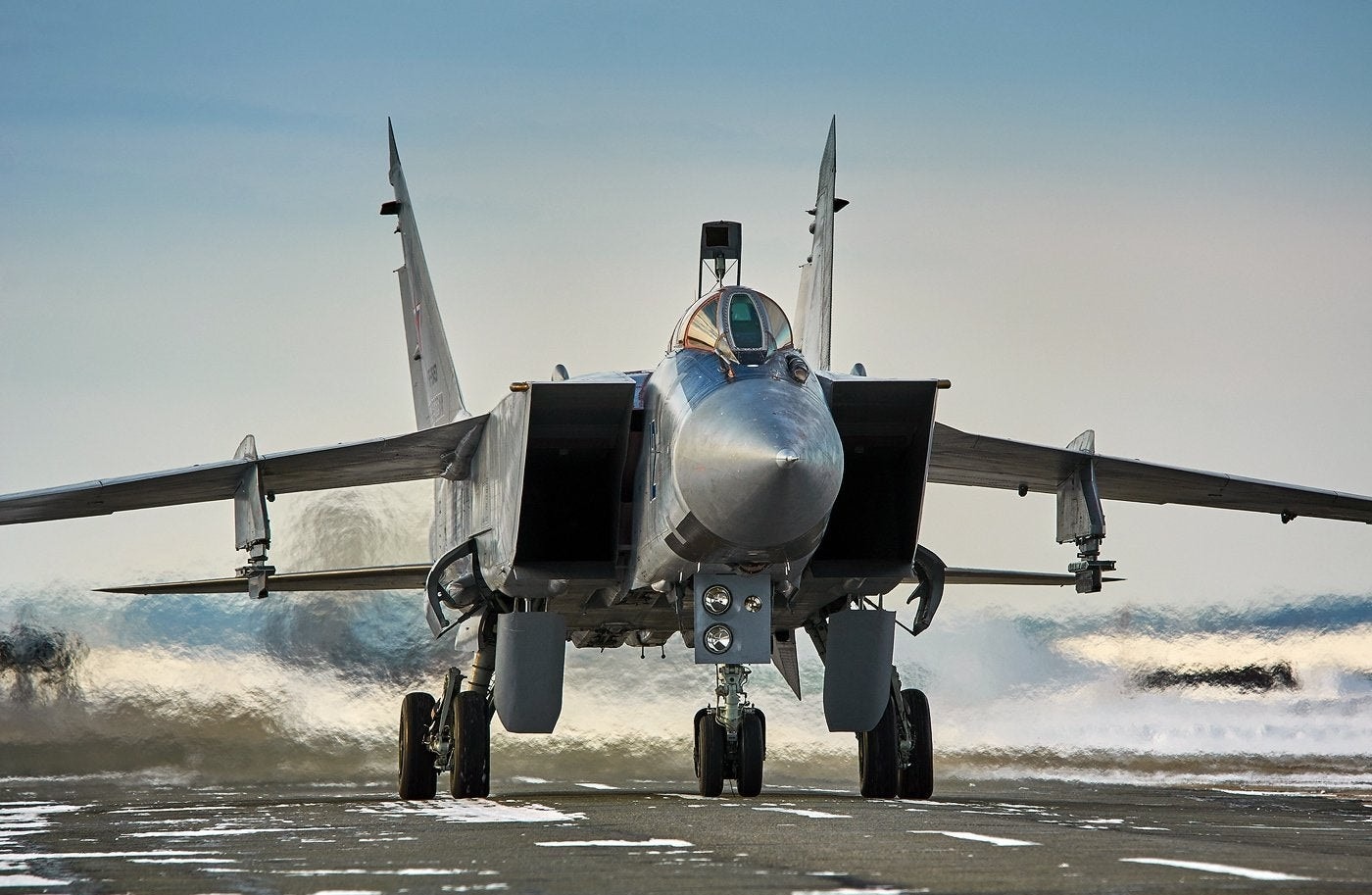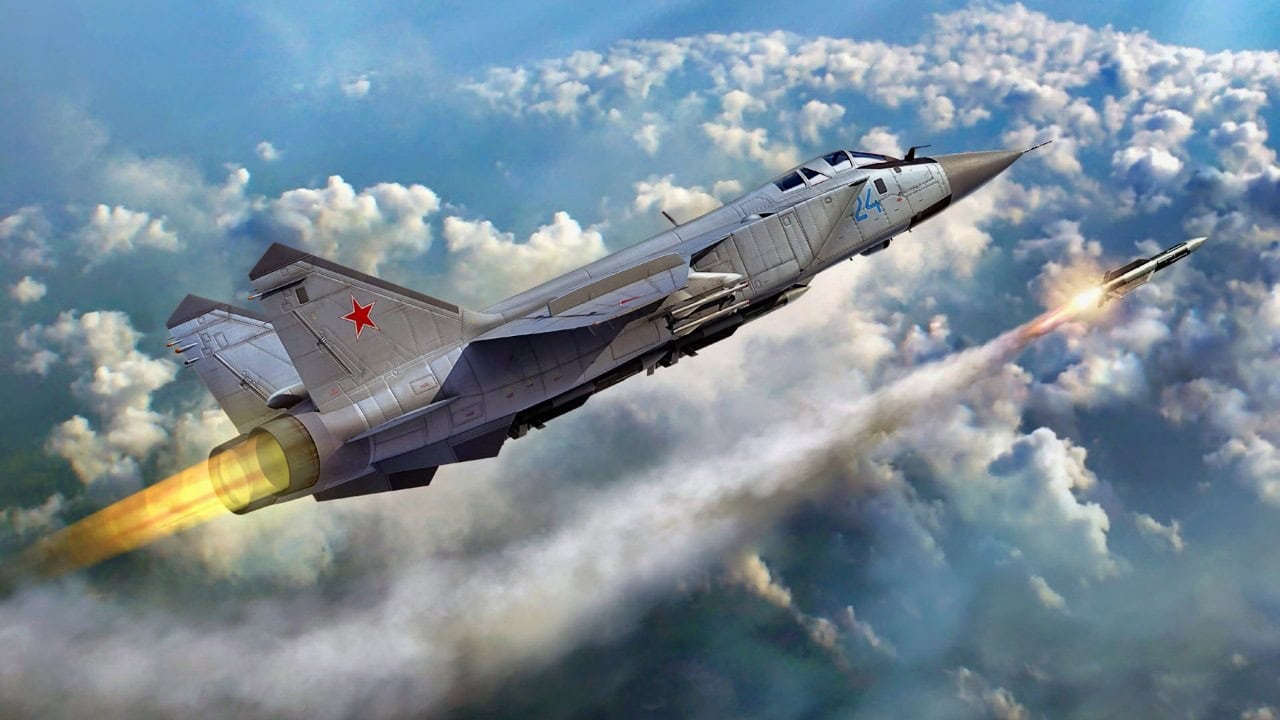Key Points and Summary: The MiG-31, also known as the MiG-31 Foxhound, one of Russia’s fastest aircraft, has evolved beyond its Cold War roots to become a key platform for launching hypersonic Kinzhal missiles in Ukraine.
-Originally designed to replace the MiG-25, it introduced advanced radar, better engines, and two-person crew operations.

MiG-31 fighter. Image Credit: Creative Commons.
-While Russia once planned a next-generation replacement, ongoing war efforts have stalled development in favor of modernizing existing MiG-31s.
-Despite financial and industrial setbacks, upgrades could keep the Foxhound operational for decades.
-However, questions remain about its ability to adapt to modern air combat and missile defense systems, particularly as Western nations advance their own air superiority technologies.
MiG-31: Russia’s Supersonic Interceptor Still Dominates the Skies
The Mikoyan MiG-31, a long-range, supersonic interceptor, is one of Russia’s air force’s fastest and most capable aircraft.
Developed as a successor to the MiG-25, the MiG-31 was designed during the late 1970s and entered service in the early 1980s near the peak of the Cold War.
While both interceptors look outwardly similar, the MiG-31 saw several significant improvements over the MiG-25.
Mikoyan MiG-25
The MiG-25, developed in the 1960s, was designed primarily for high-altitude interception of enemy bombers and reconnaissance aircraft.
In some circumstances, it was capable of speeds exceeding Mach 3, but the interceptor’s design emphasized pure speed over maneuverability and avionics, a shortcoming the MiG-31 design sought to address.
Building on the MiG-25 foundation, the MiG-31 featured a more advanced radar system, improved and more powerful engines, and the ability to fly at lower altitudes at lower speeds with better efficiency.

A Kh-47M2 Kinzhal ALBM being carried by a Mikoyan MiG-31K interceptor.
In addition, it can simultaneously track multiple aerial targets, a significant advantage over the MiG-25’s more limited engagement capabilities.
Unlike the MiG-25, a single-seat aircraft, the MiG-31 was designed with a two-person crew: a pilot focused on flying and a weapons officer who controlled the jet’s weapon systems and radio operations.
War in Ukraine for MiG-31
Today, the MiG-31 plays a crucial role in Russia’s air campaign in Ukraine.
Although initially intended for air defense and aircraft or cruise missile interception, its role has evolved to serve as a high-speed launch platform for Russia’s long-range weapons.
Most notably, the MiG-31 has been used to deploy the Kh-47M2 Kinzhal, a hypersonic missile with a reported range of over 2,000 kilometers.
The MiG-31’s ability to fly at high speeds and at great altitudes allows the Kinzhal to gain additional velocity upon launch, making it difficult to intercept. Russian forces have used this system to launch strikes against targets across Ukraine.

MiG-31. Image Credit: Creative Commons.
In Belarus
Somewhat inexplicably, a pair of Russian MiG-31K jets that Russia transferred to Belarus returned to Russia in October after only about a week.
“Based on the available information, we know that after takeoff the MiG-31Ks did not return to the Machulyshchi airfield. The fighters took a course to the south, flew past Baranovichi and then to the east — towards the Russian Federation,” the Kyiv Independent reported.
“Thus, at the moment, it is most likely that the MiGs left the territory of Belarus after takeoff and returned to Russia,” the report said.
Into the Future for MiG-31
Before Russia’s full-scale invasion of Ukraine in 2022, Russia did have plans to replace the MiG-31 with a next-generation interceptor to be called the Mikoyan PAK DP or what many call the MiG-41.
The MiG-31 successor was intended to achieve even greater speeds, likely in the Mach 3-4 range, while also incorporating stealth features to reduce the jet’s radar cross-section.
However, the ongoing war in Ukraine has resulted in a massive shift in Russia’s industrial and financial priorities.
The acute need to sustain Russia’s grinding ground operations has led to the prioritization of ammunition, drones, and cruise missile production, in addition to other equipment vital to prosecuting the ground war. In effect, there are few resources — or needs — for developing what would likely be a very technologically complex as well as expensive next-generation jet project.

MiG-31. Image: Creative Commons.
Russia has continued modernizing its fleet of MiG-31s, upgrading their avionics and extending their service life.
Reports suggest that with ongoing improvements, the MiG-31 could remain in service for up to fifty years, ensuring that it remains a significant pillar of Russia’s air force into the future.
About the Author: Caleb Larson
Caleb Larson is an American multiformat journalist based in Berlin, Germany. His work covers the intersection of conflict and society, focusing on American foreign policy and European security. He has reported from Germany, Russia, and the United States. Most recently, he covered the war in Ukraine, reporting extensively on the war’s shifting battle lines from Donbas and writing on the war’s civilian and humanitarian toll. Previously, he worked as a Defense Reporter for POLITICO Europe. You can follow his latest work on X.

